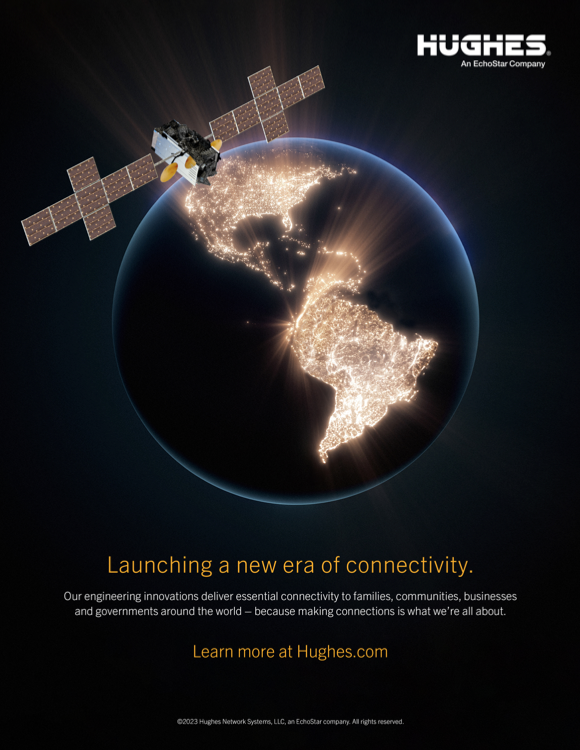Satellite communication (SATCOM) is evolving at a rapid pace, with increasing demands for higher bandwidth and the need to accommodate a higher channel count impacting available SATCOM services.

Traditional hardware-based receivers often struggle to keep up with these requirements due to their limitations in scalability and flexibility. However, Software-Defined Radios (SDRs) offer a game-changing solution by providing capabilities for high bandwidth and high channel count reception in ground stations. There are many benefits that SDRs bring to operators in terms of high bandwidth and high channel count reception and this is revolutionizing satellite data reception.
One of the primary advantages of SDRs is their ability to support high bandwidth reception. As the demand for faster data transfer rates continues to grow, traditional hardware-based receivers face challenges in meeting these requirements.
SDRs, on the other hand, can leverage their software-based processing capabilities to efficiently handle higher bandwidths. By employing parallel processing techniques and optimized algorithms, SDR-based ground stations can receive and process large amounts of data in real-time, enabling the reception of high-resolution satellite imagery, video streams and other data- intensive applications with ease.
Furthermore, SDRs excel in supporting a high channel count, allowing ground stations to receive signals from multiple satellites simultaneously. Traditional hardware-based receivers often require separate hardware components for each channel, resulting in increased complexity and cost.
SDRs, with their inherent flexibility, can handle multiple channels through software configurations, eliminating the need for dedicated hardware for each channel.
This feature reduces costs as well as simplifies ground station operations, thereby enabling the reception of data from diverse satellite constellations or multiple satellites that are operating on varying frequency bands.
The flexibility of SDRs also enable ground stations to adapt to different modulation schemes and frequency bands, further enhancing their high channel count capabilities.
Satellites employ various modulation schemes, such as QPSK, 8PSK, or QAM, depending on the data rate and bandwidth requirements. Traditional hardware- based receivers often specialize in specific modulation schemes, making it challenging to receive signals from satellites using different schemes. SDRs, with their software-defined nature, can dynamically switch between modulation schemes and adapt to the specific requirements of each satellite, ensuring optimal reception performance across a wide range of satellites.

SDRs such as Per Vices Cyan provide high bandwidth and
high channel count reception for ground stations.
Moreover, SDRs facilitate the implementation of advanced signal processing techniques to enhance high bandwidth and high channel count reception. Techniques such as adaptive filtering, channel equalization, and error correction can be implemented in software, allowing for efficient and real-time processing of multiple signals.
These techniques help mitigate the effects of fading, interference, and noise, resulting in improved reception quality and higher data throughput. SDR- based ground stations can adaptively adjust their processing parameters based on the received signal characteristics, ensuring reliable reception even in challenging environments.
Another key advantage of SDRs is their scalability. As SATCOM systems continue to evolve and new satellites are launched, the demands for higher bandwidth and increased channel count will only intensify. SDRs offer a scalable solution that can easily accommodate future requirements through software upgrades and reconfigurations. This scalability eliminates the need for frequent hardware replacements, reducing costs and downtime for ground station operators.
Additionally, SDRs enable ground stations to stay up-to-date with the latest satellite technologies and frequency allocations, ensuring compatibility with new satellite systems without requiring significant infrastructure changes.
In terms of high bandwidth reception, SDRs leverage their wideband capabilities to receive and process a broad range of frequencies simultaneously. They can cover multiple frequency bands, such as L-, S-, C-, and Ku-band, without the need for separate hardware for each band. This flexibility enables ground stations to receive signals from different satellites operating on various frequency bands, expanding their access to satellite data sources.
When it comes to high channel count reception, SDRs offer the advantage of parallel processing and multi-channel capabilities. Ground stations equipped with SDRs can receive and process multiple channels simultaneously, allowing for the reception of signals from multiple satellites or different transponders within the same satellite. This capability is particularly beneficial for applications such as Earth Observation (EO), where data from multiple satellites or sensors need to be collected and processed simultaneously for comprehensive analysis and monitoring.
Additionally, SDRs can employ advanced beamforming techniques to enhance reception performance in high channel count scenarios. By dynamically adjusting the reception beam direction and focusing on the desired signals, SDR-based ground stations can improve the signal-to-noise ratio and minimize interference from adjacent channels. This beamforming capability allows for more robust and reliable reception of signals, especially in environments with high signal density or complex interference patterns.
Furthermore, SDRs facilitate the integration of multiple reception antennas or phased array systems, enabling ground stations to receive signals from different directions simultaneously. This diversity reception enhances the resilience and reliability of satellite data reception, as it reduces the impact of signal blockage or fading caused by obstructions in the environment. By combining signals received from multiple antennas or phased array elements, SDR-based ground stations can improve the overall reception quality and increase the chances of capturing weak or degraded signals.

SDRs revolutionize satellite data reception in ground stations by providing high bandwidth and high channel count capabilities. Through their software-defined processing, SDRs efficiently handle large amounts of data, support multiple channels, and adapt to different modulation schemes and frequency bands. The advanced signal processing techniques implemented in SDRs further enhance reception quality and data throughput. With their scalability, flexibility, wideband capabilities, parallel processing, beamforming techniques, and antenna diversity integration, SDRs offer a comprehensive solution for ground stations to meet the ever-increasing demands of satellite communication systems.
As the satellite industry continues to push the boundaries of high-speed and data-intensive applications, SDRs will play a vital role in ensuring reliable and efficient reception of satellite data.
www.pervices.com

Brandon Malatest
Author Brandon Malatest is the COO and co-founder of Per Vices Corporation, a leader in Software Defined Radio technology. Brandon has an honour’s degree in Physics with a specialization in Experimental Physics from the University of Waterloo in Ontario, Canada. On graduating, Brandon started his career as a research analyst and statistician at one of the largest market research firms in Canada and later joined Victor Wollesen to co- found Per Vices. Since starting Per Vices, Brandon has authored many thought leadership articles based on software defined radio (SDR) technology.
Per Vices, a leader in software defined radios, offering the highest channel count and bandwidth SDRs for the satellite ground station market. The high performance radios with exceptional signal processing capabilities, and advanced hardware features enables customers to leverage Per Vices SDRs to achieve superior performance, enhanced flexibility, and future-proof solutions. Contact solutions@pervices.com to learn more about the different options available.




